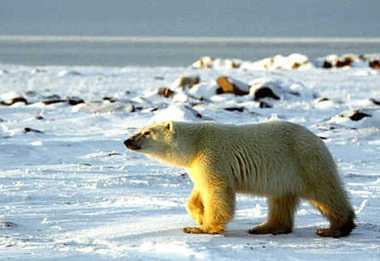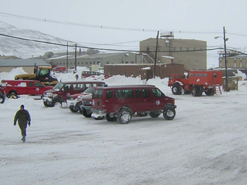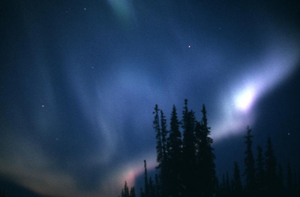A computer drawing of Antarctica. The Catabatic winds are shown at the top of the drawing.
Click on image for full size
Found in Wikipedia Commons - Source is Hannes Grobe at the Alfred Wegener Institute for Polar and Marine Research, Bremerhaven, Germany
Antarctic Weather
Antarctica is the coldest place on Earth. It is even colder than
the Arctic!
Temperatures as low as -129 degrees F (-89 degrees C) have been recorded. Near the South Pole, the average temperature is only -58 degrees F (-50 degrees C). Not really swimsuit weather is it?
One of the reasons that Antarctica is so cold is that in winter (March 22 throughout September 22) the sun doesn’t rise above the horizon at all! So the whole continent stays dark! That makes for a long, cold winter.
Antarctica has also been called the windiest continent on Earth! The wind can be very strong. At Cape Dennison in Antarctica, the average windspeed is more than 50 mph, and winds have been as high as 200 mph.
Antarctica is covered with ice and snow. But not a lot of ice and snow fall each year. What is there just stays there - it doesn't melt. Antarctica actually gets less snow in a year then many deserts get rain.
What does all this mean for us? It means that Antarctica is one of the hardest places on Earth for humans to live. Exploring and studying the continent has been hard too.
You might also be interested in:

In the Arctic, you will find the Arctic Ocean surrounded by the continents of Europe, Asia, and North America. You will find the geographic North Pole and the magnetic North Pole there; both are in the
...more
The Earth's orbit is in the shape of an ellipse (a stretched out circle), so that sometimes the Earth is closer to the Sun than at other times. Is this the cause of the seasons? You can imagine that if
...more
Wind is moving air. Warm air rises, and cool air comes in to take its place. This movement creates the winds around the globe. Winds move at different speeds and have different names based on their speed.
...more
Polar exploration includes the exploration of the Arctic and the Antarctic. The Arctic is the area around the Earth's north pole. Antarctica is a continent that surrounds the South Pole. When you think
...more
Stuff in the Polar Atmosphere There are some special things that happen in the atmosphere near the Poles of the planet. Here are a few of them. Particles from the Sun follow Earth’s magnetic field and
...more
What Will You Find There? If you travel to the South Pole, you will find the continent of Antarctica surrounded by the Southern Ocean. The geographic South Pole is marked by a large sign that scientists
...more
Antarctica is the coldest, windiest, and driest continent on Earth. It is about one and a half times the size of the United States. Almost all of Antarctica is covered with a thick layer of ice called
...more














